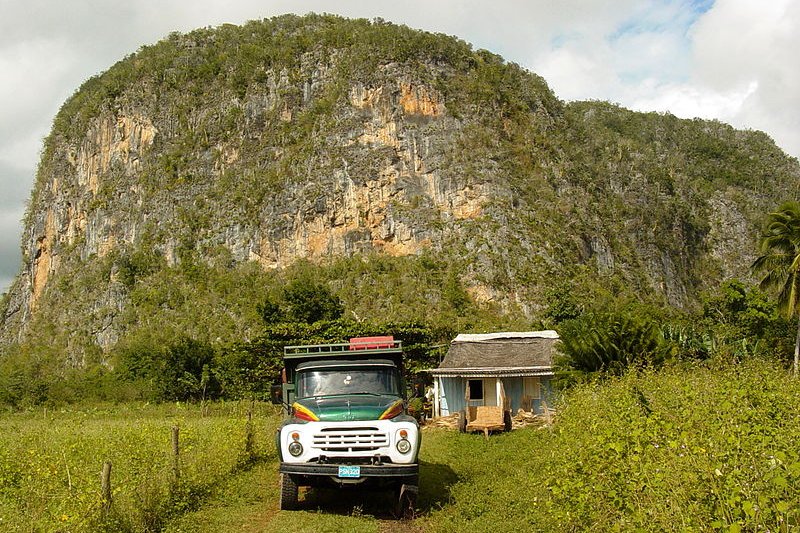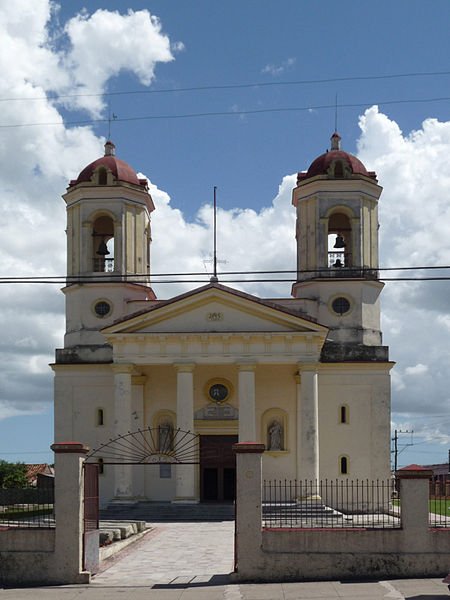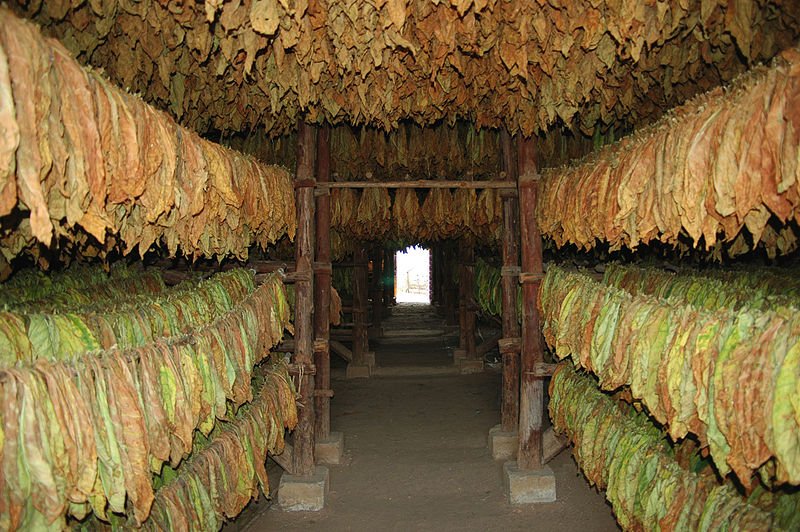
 Countryside at Pinar del Rio, Cuba
Countryside at Pinar del Rio, CubaSource: https://commons.wikimedia.org/wiki/File:Countryside_Near_Pinar_del_Rio_-_Cuba.JPG
Author: Adam Jones

Pinar del Río is a city on the western part of Cuba. The provincial capital of Pinar del Río Province, it covers 708 sq km (273.4 sq mi) and has a population of 191,000 people (2011 estimate).
Pinar del Río was one of the last major cities founded by the Spanish in Cuba. It was originally called Nueva Filipinas, or New Philippines, because its earliers inhabitants were settlers from the Philippines who came on the Manila Galleons. They introduced tamarind and congee (called arroz caldo in Spanish) to the area.
 San Rosendo Cathedral, Pinar del Río
San Rosendo Cathedral, Pinar del RíoSource: https://commons.wikimedia.org/wiki/File:San_Rosendo_Cathedral_%28Pinar_del_R%C3%ADo%29.jpg
Author: Blue Serge

The Filipino immigrants worked in the big tobacco plantations around Pinar del Río. This is where the tobacco plants for the renowned La Flor de Isabela cigars were first cultivated. Eventually the Filipino assimilated themselves into Cuban society, breaking the ties with their homeland.
Nuevo Filipinas was renamed Pinar del Río in 1774, after the pine grove along the Guamá river. Today it continues to be the heart of the tobacco producing region and center of the tobacco industry.
 The drying of tobacco leaves in Pinar del Rio
The drying of tobacco leaves in Pinar del RioSource: https://commons.wikimedia.org/wiki/File:Tobacco_drying_in_Pinar_del_R%C3%ADo_(01).jpg
Author: Gorupdebesanez

Visiting Pinar del Río
Take the bus from Havana to Viñales. It makes a stop at Pinar del Río/Sights & Attractions in Pinar del Río
- Calle Martí
Main street in , after the pine grove along the Guamá river with many interesting buildings. - Casa de la Cultura
Building where cultural performances are staged in the evening. - Casa Garay
Producer of Guayabila del Pinar, a famous local liqueur since 1892. Visitors can join the house tour finishing with a sampling of the liqueur. - Fábrica de Tabacos Francisco Donatién
This is a small cigar factory occupying a 19th century jailhouse where visitors can observe how cigars are hand made. - Museo Provincial de Historia
Museum that showcases the history of the province from pre-Columbian period to present day. - Palacio de Guasch
A historic building that blends Moorish arches with Gothic spires and Baroque elements, the palace was the home of a wealthy physician who wanted to bring back elements of architecture that has impressed him in his travels. Today it houses the museo of natural history (Museo de Ciencias Naturales). - Teatro Milanés
A Neo-Classical theater built in 1845. It seats an audience of 500.
 Latest updates on Penang Travel Tips
Latest updates on Penang Travel Tips
About this website

Dear visitor, thank you so much for reading this page. My name is Timothy Tye and my hobby is to find out about places, write about them and share the information with you on this website. I have been writing this site since 5 January 2003. Originally (from 2003 until 2009, the site was called AsiaExplorers. I changed the name to Penang Travel Tips in 2009, even though I describe more than just Penang but everywhere I go (I often need to tell people that "Penang Travel Tips" is not just information about Penang, but information written in Penang), especially places in Malaysia and Singapore, and in all the years since 2003, I have described over 20,000 places.
While I try my best to provide you information as accurate as I can get it to be, I do apologize for any errors and for outdated information which I am unaware. Nevertheless, I hope that what I have described here will be useful to you.
To get to know me better, do follow me on Facebook!
Copyright © 2003-2025 Timothy Tye. All Rights Reserved.

 Go Back
Go Back